I have two main questions, but starting from the beginning: I wanted to know how FFT (fast Fourier transform) works on real examples. I created two sinusoidal waves (for example Wave1 = 5 Hz and Wave2 = 15 Hz amplitude), then I added those two and made FFT from third "Wave3". It looks OK - I saw my "peaks" around 5 and 15 Hz.
Blue = 5 Hz, Red = 15 Hz, Yellow = Blue + Red. FFT from "Yellow" Wave, looks good:
OK, and then I have changed the data. Now I have two waves with identical amplitudes but opposite phases. If I add them, their amplitude is 0 - and that seems correct to me.
Two waves with opposite phases. Yellow - Wave1+Wave2 + Strange FFT of the yellow wave:
And now is the part that I don't understand at all. Here are my questions:
1) Even if I see on the picture that this third Yellow wave has an amplitude equal to 0, it's not like that in data tables. After adding two main waves (and they have opposite data!) I get the strange result.
Example: 5 first points in the data
Wave 1:
- 0,0627905195293128
- 0,125333233564304
- 0,187381314585724
- 0,248689887164855
- 0,309016994374947
Wave 2:
- -0,0627905195293134
- -0,125333233564304
- -0,187381314585724
- -0,248689887164855
- -0,309016994374947
Wave 3 (Sum) :
- -5,68989300120393e-16
- -1,11022302462516e-16
- -1,11022302462516e-16
- 3,05311331771918e-16
- -1,11022302462516e-16
Why the sum of these waves is not equal 0, as it is shown in the picture? Why FFT looks so strange? Is there even a possibility that FFT will show us the real amplitudes of two identical waves with opposite phases? I thought it will not, but what's the truth?
Here is my MATLAB code:
THREE WAVES:
D = 1; % 1 second
S = 1000; % sampling rate
P = 0.5; % phase
T = 1/S; % sampling period
t = [T:T:D]; % time
myphi=2*pi*P;
myphi2=2*pi*1;
syn3 = sin(2*10*t*pi+myphi); % first wave
syn2 = sin(2*10*t*pi+myphi2); % second wave
sinmax=syn2+syn3; % yellow wave
figure; plot(t,syn3,t,syn2,t,sinmax,'LineWidth',2); grid on;
xlabel('Time (seconds)');
ylabel('Amplitude');
FFT CODE:
L = length(sinmax);
myFFT = fft(sinmax,S);
myFFT=myFFT/L; %scale the output to 1
freq = S/2*linspace(0,1,S/2);
figure; stem(freq,abs(myFFT(1:length(freq))));
xlabel('Frequency (Hz)');
ylabel('Amplitude');
Thank you very much in advance...
Mary

